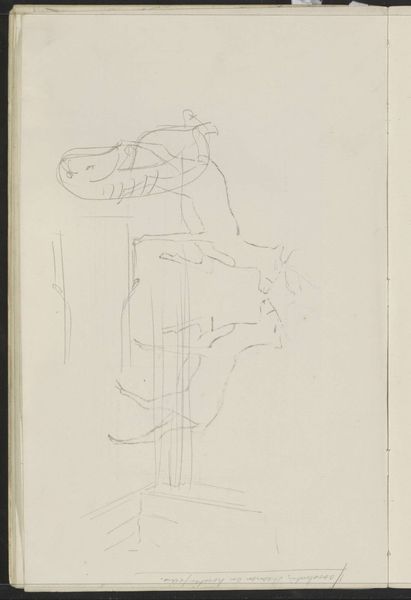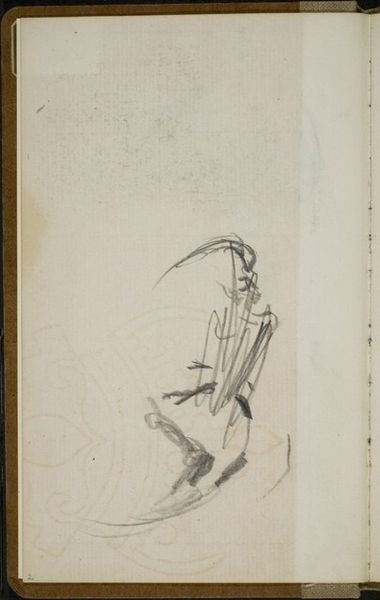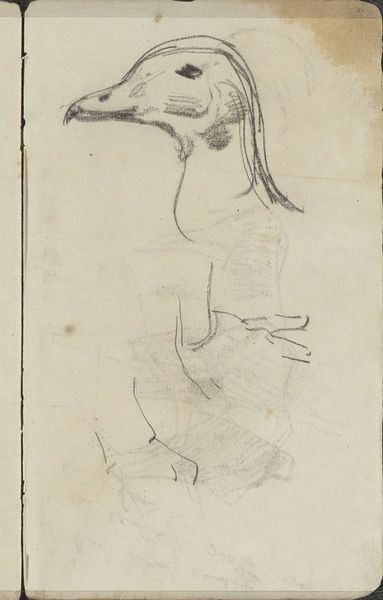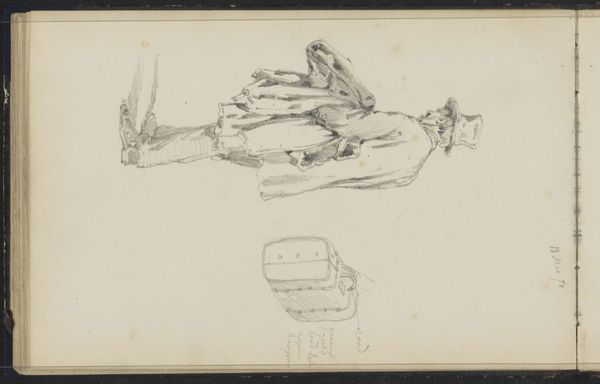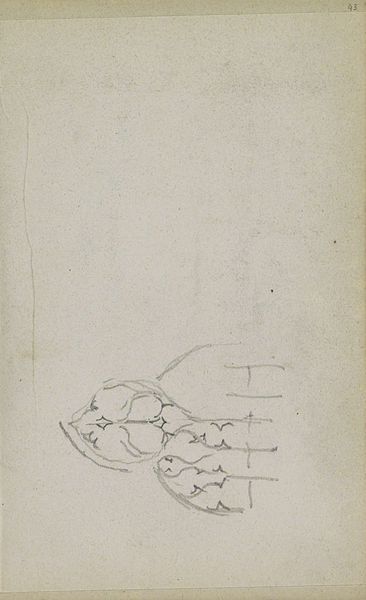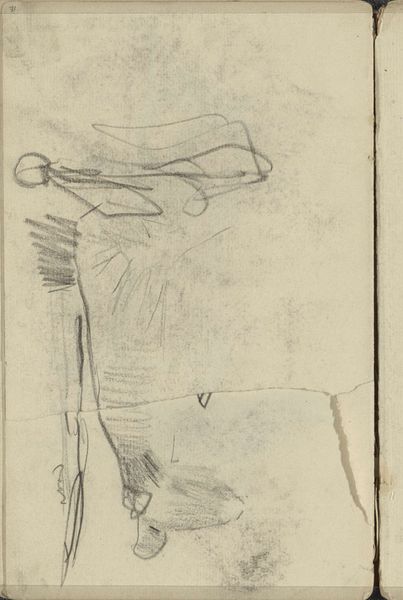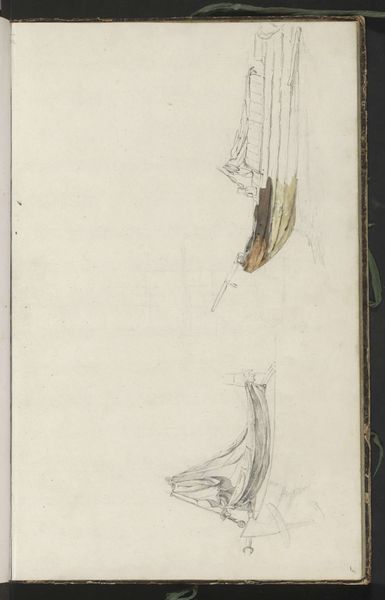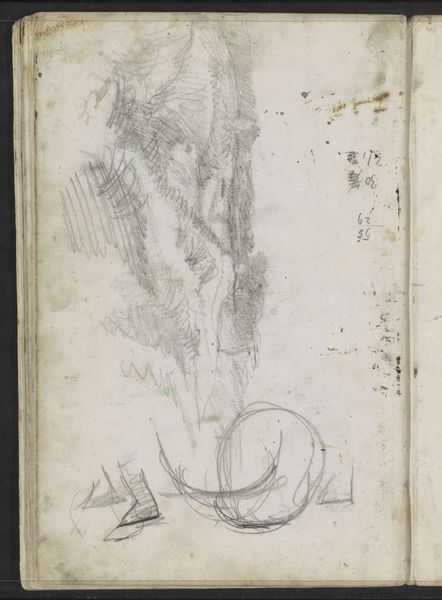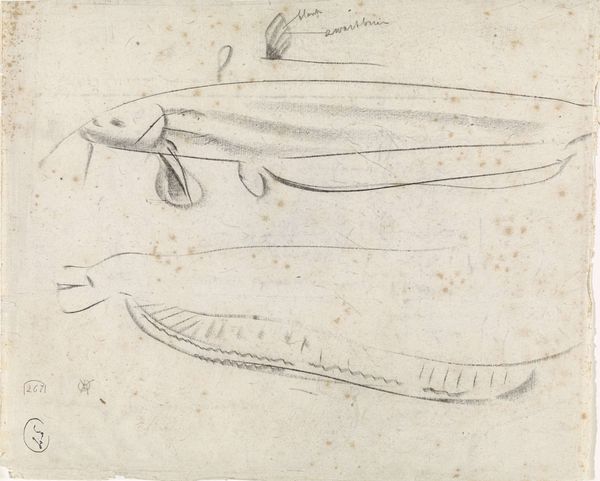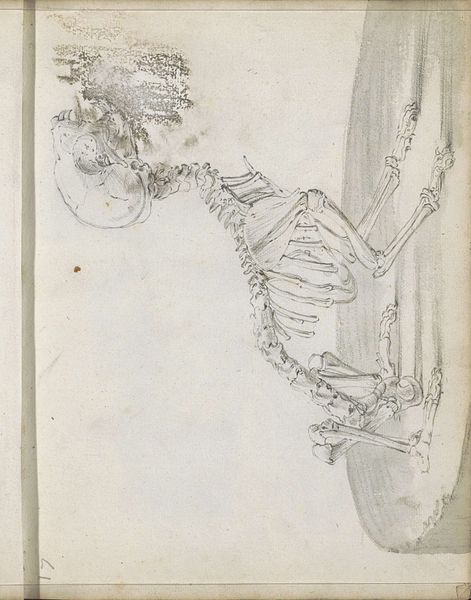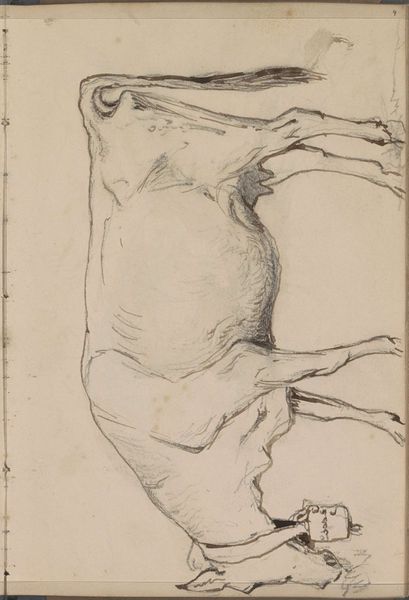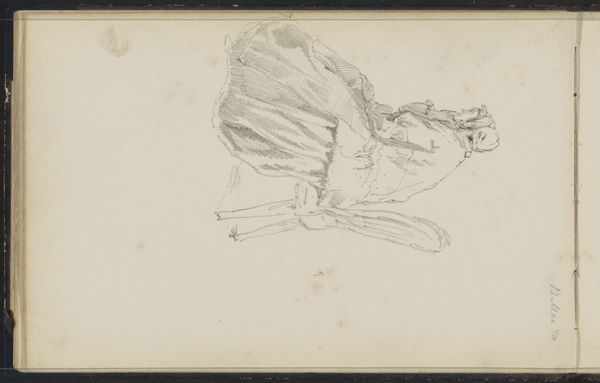
drawing, paper, pencil
#
drawing
#
neoclacissism
#
toned paper
#
light pencil work
#
quirky sketch
#
pencil sketch
#
classical-realism
#
paper
#
form
#
personal sketchbook
#
idea generation sketch
#
ink drawing experimentation
#
pencil
#
line
#
sketchbook drawing
#
sketchbook art
#
initial sketch
Dimensions: height 271 mm, width 194 mm
Copyright: Rijks Museum: Open Domain
Editor: So, here we have Luigi Valadier's "Design for an Oval Tureen," dating from around 1770 to 1780. It's a pencil drawing on paper, and I’m immediately drawn to the incredibly fine lines, but it feels incomplete somehow. What do you see in this piece beyond a preparatory sketch? Curator: It’s interesting to consider this object not just for its aesthetic qualities, but within the framework of 18th-century workshops and production. Think about the labor involved in crafting such a tureen—the many artisans specializing in specific elements like casting, chasing, or engraving. Editor: You mean thinking about it as an object involving social relationships between makers? Curator: Precisely. Consider the socio-economic implications: who had access to such luxury goods? Who was involved in its creation, and what were their working conditions? The tureen becomes less about idealized neoclassicism and more about material culture. We can also appreciate the way Valadier has sketched, perhaps experimenting with how the materiality of metal would be manifest on the object. Does thinking of it this way shift your understanding of the sketch’s “incompleteness?” Editor: It does. If the sketch is looked at from that perspective, the 'unfinished' parts invite us to think about the labour needed to make them "complete". I can see the process embedded in the artifact now. So it’s less about judging the drawing as lacking, and more about recognizing it as a record of production? Curator: Exactly! It's a document of design within a specific system of making, not just a prelude to a finalized art object. What we are left with is a piece to interrogate the circumstances that created it, a valuable glimpse into the 18th century. Editor: That’s fascinating. It really makes me consider the social and economic forces that shaped not just the final product, but even the design process. I never considered that so many craftspeople could work on a single, relatively simple item. Curator: The nuances that emerge when focusing on materiality certainly adds dimensions that one misses by thinking in terms of art styles.
Comments
No comments
Be the first to comment and join the conversation on the ultimate creative platform.
